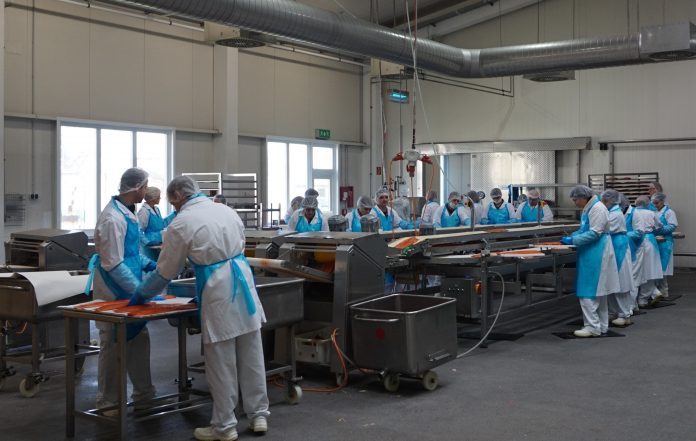German salmon processor and smokehouse Gottfried Friedrichs is moving in new directions. Contact with foodbloggers led to 2 million internet hits.
“If you sell at high prices, you have to explain why, ” says CEO Alexander von Reisswitz.
Recent development at Friedrichs, part of a new marketing strategy, is to contact foodbloggers, says von Reisswitz. “This turns out to be a good way to explain to the public what we are doing. For example: our wild coho salmon is caught with small boats, using line and hook, only catching 150-200 fish per day at the most.”
Bloggers
“That’s a good product story, but you cannot put it on the package. And we are not big enough for huge advertising campaigns. Also: this story is much more credible when independent food bloggers tell it.”

Friedrichs invited the bloggers onto its fishing boats in the Bering Sea to show them how the salmon is caught. “We also did this with our farmed salmon. We took the bloggers to Norway to show the farming process, which is of a very high level.
“Farmed salmon is the quality the consumer knows best. It contains on average about 18 percent fat, wild salmon only three to five percent. That is very different, in both structure and taste. Also, sockeye has a very dark red colour. People ask, ‘What kind of artificial colouring do you use?’ There is a lot of ignorance about matters like this, that bloggers can help solving by giving first-hand information. Of course they could write whatever they want, we did not try to influence this in any way. As a result, we reached two million internet hits.”
Von Reisswitz believes this is the right way to do it. “We also invited the bloggers to our factory in Waren. Many questions were raised, and we learned a lot from that. This is the right direction for a premium brand. If you sell a product like coho salmon for EUR 6 per 100 grams, you have to be able to explain why.”
Coho and sockeye
Wild salmon, from Alaska, is Friedrichs’ flagship product. “Farmed salmon, sourced from Norway, Scotland and Ireland, is 60 percent, and wild salmon 40 percent of our overall sales. But if you look at our product range, the two top selling products are wild salmon.”
The main product in wild salmon is coho. “Sockeye is easier to catch and therefore the yearly quantities are higher than those of coho. But the demand for coho has grown 50 percent in volume, so supply is crucial. Fortunately we managed to get the right supply for coho this year.”
That focus means regular contact with Alaska. “Our head of purchasing travels to Alaska every year. We are proud to have long-term relations there.”
Laser scanner
Friedrichs recently invested in modernizing its factories with, among other improvements, state-of-the-art cutting machines that were by far the biggest financial investment. The smoking process however, remains completely artisanal, says Von Reisswitz. “Marinating and smoking are still done by hand to maintain quality. We actually marinate our salmon for five days using a traditional Norwegian recipe for gravlaks.”

But when that process is finished, the salmon is no longer touched by human hands, to get the best possible results, he explains. “We installed a fully automated slicing system, with a laser scanner, that ‘sees’ the shape of the salmon filet and sets the knife to cut the fish at slices of exactly 25g. As far as I know we are the only company in Europe using this system produced by Marel.”
The fish bones of the farmed salmon filets are also removed automatically. “The bones of the wild salmon filets on the other hand, are deboned manually by our very experienced workers, which makes the manufacturing process much more expensive. Wild salmon bones have a hook, and so far there is no machine available that is able to remove those.”
Game-changer
Last year’s price fluctuations have hardly affected the company. “Of course we had to increase our prices, as all companies did. But our customers were willing to pay that price. It did affect the overall German market though.”
Von Reisswitz believes salmon prices will remain high, and even increase. “You see the same cycle every year. The producers raise their prices, volume decreases, so prices decrease slightly as well.”

“Of course, the situation in Chile has influenced the international market. Now international demand is changing, with lots of increase in demand from the Middle East and Asia. The key question is not what will happen with the prices, but will the producers be able to meet demand? “
The game changer will be the new demand in China and other developing countries, he continues. “That is the real question for the future of the business. All those people living in the Far East and the Middle East whose living standard is improving and who want to show, ‘We are also able to buy salmon.’ These markets are growing.”
Read also: Friedrichs start selling salmon via Amazon.


